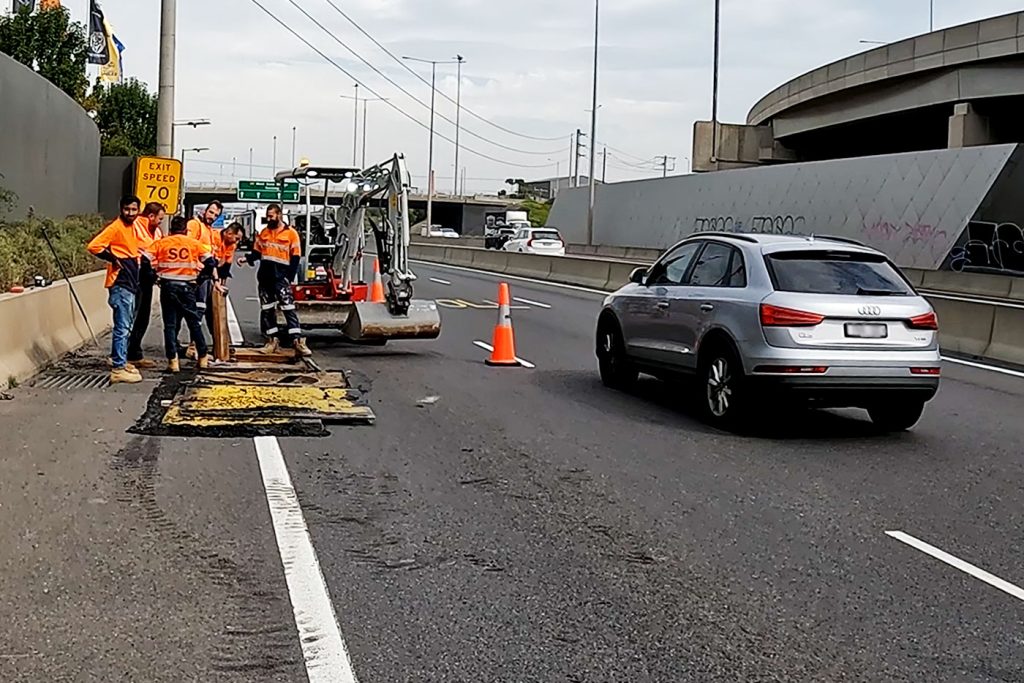Subsurface Pits are a crucial component of modern subsoil drainage systems, designed to manage the flow of underground water. They are commonly used in DTP (VicRoads) transport and road infrastructure projects where subsurface drainage is required in confined spaces.
SVC’s Subsurface Pit features a versatile design which allows its compliant function as an S1 or S2 subsurface drainage pit, complying with the requirements specified in VicRoads SD 1611. Where an S1 pit is required, a Type M3 600dia concrete pit lid is supplied, designed to sit snugly inside the pit collar. Where an S2 pit is required, the pit body is flipped so that the concrete collar is at the base, and a 600dia ductile iron infill cover is supplied as the cover solution, load-rated to Class D to ensure compliance.
SVC’s subsurface pits can safely withstand vertical loading, compacting pressure and hydrostatic pressure. By collecting and redirecting excess groundwater, they protect major infrastructure assets from water damage. Our subsurface pits provide a reliable, long-term solution for controlling groundwater, ensuring the stability and longevity of civil infrastructure.









